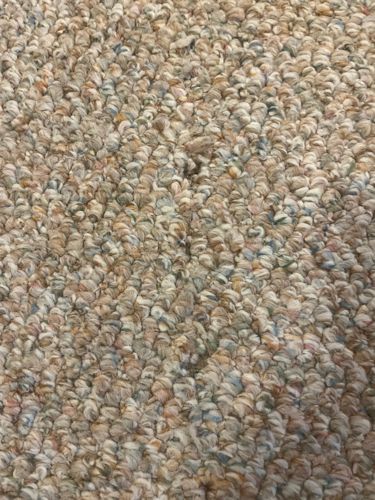Carpet Beetle (likely Varied Carpet Beetle or Black Carpet Beetle)
Scientific Name: Antbrenus verbasci (Varied Carpet Beetle) or Attagenus unicolor (Black Carpet Beetle) are common species, but definitive identification is not possible from the image.
Order & Family: Order: Coleoptera, Family: Dermestidae
Size: Adults: 2-5 mm (0.08-0.2 inches); Larvae: up to 5 mm (0.2 inches)

Natural Habitat
Indoors: Carpets, rugs, upholstered furniture, clothing, blankets, taxidermy, stored food products, museum collections, attics, and anywhere dust and lint accumulate. Outdoors: Nests of birds, rodents, and insects, as well as flowering plants where adults feed on pollen.
Diet & Feeding
Larvae primarily feed on natural fibers containing keratin, such as wool, silk, fur, feathers, and dried animal products. They can also consume pet food, felt, and some synthetic materials if mixed with natural fibers. Adults feed on pollen and nectar.
Behavior Patterns
Carpet beetles undergo complete metamorphosis. Larvae are typically found in dark, undisturbed areas, feeding on keratin and other natural fibers. Adults are attracted to light and often found near windows; they feed on pollen and nectar and are good pollinators. Larvae are known to 'play dead' when disturbed.
Risks & Benefits
Risks: Considered pests due to their destructive feeding habits on natural fibers, causing damage to clothing, carpets, and other household items. They can also trigger allergic reactions and dermatitis in sensitive individuals due to irritants from their larval hairs or shed exoskeletons. Benefits: Adults can contribute to pollination. Larvae can be useful in museum settings for cleaning skeletons of animal specimens.
Identified on: 8/12/2025